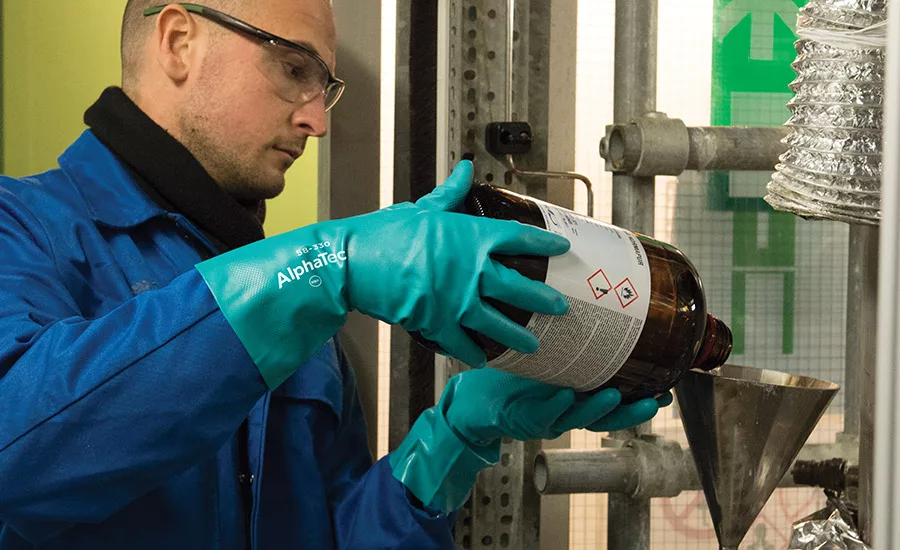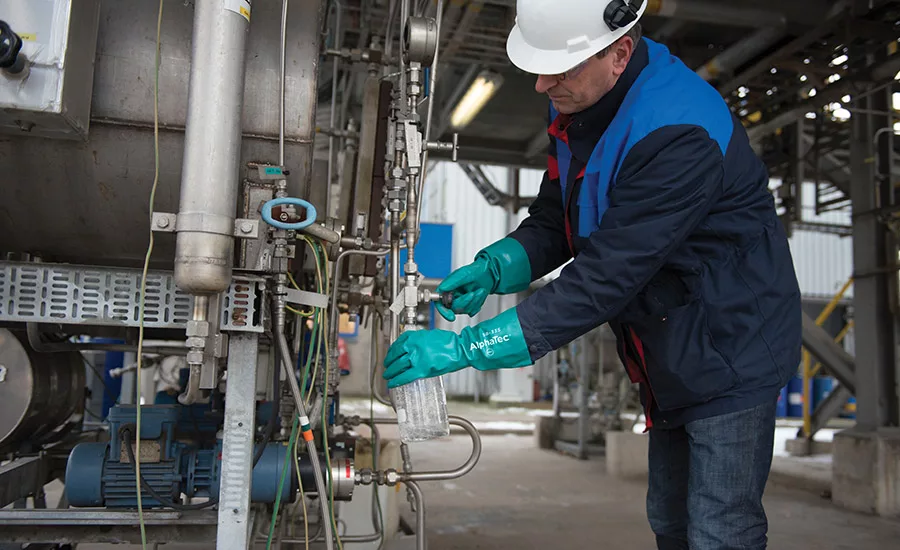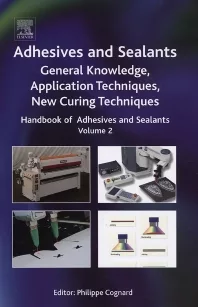Handle with Care: Personnel Protection in the Adhesives and Sealants Industry
The personal protective equipment industry is staying ahead of worker safety and comfort with innovative new tools.



Compliance in a chemical environment not only requires selecting the right personal protective equipment (PPE) for a variety of chemicals, but also must ensure that workers wear the equipment. The PPE industry is innovating to ensure worker comfort, as well as safety in challenging chemical environments so that workers are protected at all times.
In addition, scientists are discovering new chemical combinations or creating novel applications for existing chemicals. This is an encouraging sign for the chemical industry. However, it comes with risks—most importantly, the increased risk of chemical exposure, especially to newer chemicals with a limited track record of use. These chemicals, if mishandled, can pose a significant threat to workers.
The PPE industry is now leading the charge in helping to reduce and better manage this chemical exposure risk by providing workers with state-of-the-art tools, protective gear and training resources. In this way, PPE suppliers effectively function as shields against complex—and potentially dangerous—chemicals.
Building a powerful shield takes years of research and experience. That’s why the PPE industry has increasingly embraced R&D and innovation as it seeks to better protect workers and address chemical challenges head on. This industry-wide shift to a proactive approach will help maximize worker productivity in the chemical industry and—most importantly—reduce the risks of exposures.
The Current State of R&D
In the past, most new protective products were released only as a result of a company’s specific needs or in response to particular worker injuries, such as employees improperly using the wrong chemical gloves when handling certain hazardous liquids. A new holistic approach can leverage technological advances and a better understanding of workers’ behavior and needs in order to develop the most effective protective equipment possible.
PPE suppliers now routinely test new potential gloves and glove materials to determine if they can withstand the rigors of a chemical work environment. Many PPE suppliers also regularly hold focus groups and conduct worker surveys to get both quantitative and qualitative feedback on the effectiveness and usability of various PPE products. This data helps design future R&D efforts. According to many of these studies, workers typically look for three characteristics from chemical gloves: protection, performance and comfort.
Protection
Protection should always be the primary function of any chemical glove. Workers expect their gloves to provide protection against the chemicals in their work environment and to comply with safety standards to avoid common injuries or prevent exposures. Chemical gloves produced today are designed to offer the right protection while also being durable enough to withstand daily use.
Performance
Workers want gloves that will perform effectively for the given application. Gloves should provide enough grip to enable the handling of oily or slippery materials, which traditionally are some of the most likely chemicals to lead to a workplace incident. Grip technology is a major focus for PPE suppliers, leading to new advancements to the benefit of workers everywhere. Tactility and flexibility are also important considerations for glove wearers, whose job might involve many different types of hand and finger movements.
Comfort
Workers want their gloves to provide a good fit. Comfortable gloves may seem like a luxury, but research shows that workers are more productive and less likely to be involved in an accident if the gloves they are wearing fit well. This is why the comfort of chemical gloves is an increasingly important focus of R&D departments at global PPE suppliers.
Today’s technology has enabled the innovation of protective gloves that conform to the shape of the hand, ensuring a maximum fit and providing the flexibility and tactility workers need to do their jobs. Many new protective gloves are also composed of state-of-the-art materials that help keep workers’ hands at comfortable temperatures, reducing the discomfort of hand perspiration, which is a common unmet need with chemical gloves.
Chemical Protection Devices
Gloves are just one component of chemical protection. In many instances, especially where the risk of exposure to hazardous substances is high or unavoidable, chemical-protective clothing can provide the last line of defense. For example, in the case of a chemical, biological or radioactive risk, a chemical protective suit may be necessary to avoid a potentially life-threatening injury or illness. Hazmat teams often need gas-tight suits in order to protect against multiple hazards. On farms, workers who are responsible for spraying pesticides should wear protective clothing and respiratory protection to protect against accidental exposure. Asbestos remediation professionals should wear suits that protect against particulate exposure when decontaminating people’s homes.
Chemicals can pose a variety of risks, such as toxicity, flammability, corrosiveness or reactivity. As such, PPE suppliers know how critical it is to first assess the hazardous environment in order to make the proper selection of chemical-protective clothing. Today, PPE suppliers are constantly observing different types of chemical environments and measuring the concentration, physical state and duration of exposure to various chemicals to best determine the level of risk. This data is used to inform what materials, based on their ability to resist the permeation of a given chemical, should be used in a range of chemical-protective garments. This approach has resulted in a number of important innovations in protective clothing—from gas-tight, fully encapsulated ensembles worn in conjunction with an internal self-contained breathing apparatus (SCBA), to suits that ensure protection against liquid sprays, to garments designed specifically to protect against particulate exposure.
These developments represent a major step forward for the chemical industry and for the effectiveness of gloves and other protective equipment, but PPE suppliers have only scratched the surface of what’s possible. Today’s leading PPE suppliers have robust R&D departments that are on the front lines of helping transform the chemical industry into one of the world’s safest work environments.
For more information, visit www.ansell.com.
Looking for a reprint of this article?
From high-res PDFs to custom plaques, order your copy today!








